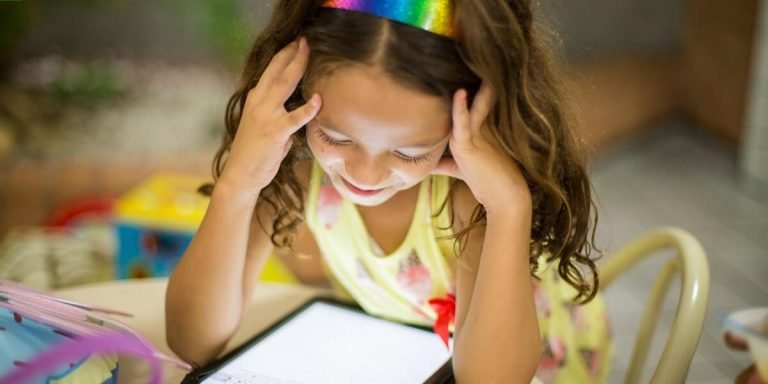Homeschool Styles: Exploring Different Approaches to Home Education
Navigating the world of home education can be overwhelming, particularly when considering the different homeschool styles that are available. For many parents and educators, understanding these methodologies is instrumental in developing a curriculum tailored to a child’s unique learning style and interests.
These varying approaches to homeschool provide distinct advantages and challenges; they could blend formal instruction with informal learning experiences or strictly adhere to traditional classroom models. As we delve into this topic further, our aim is to help identify which of these techniques align best with your educational goals for your children at home.
Did you know?
Despite the common misconception, studies have shown that children who are homeschooled generally tend to have superior social skills. They often engage in more community service activities and interact with a wide range of age groups outside their school environment.
Understanding Homeschool Styles: A Comparative Analysis
As we voyage through the world of childhood education, understanding homeschool styles has become paramount for parents and educators. The advent of technology in recent years has simplified this process with myriad resources at our fingertips to compare these styles effectively.
In 2023, a surge was seen in families adopting the home-based learning method due to numerous socio-environmental factors. This decision often leads parents into an overwhelming labyrinth of educational options – familiarizing themselves with different homeschool styles is therefore critical.
Traditional or classical approach, Waldorf and Montessori methods are some widely accepted models among others like Unschooling that throws focus on spontaneous activities driven by children’s interests. Each style harbors its own unique philosophy about child development and techniques differ according traditional principles or modern pedagogy emanating from research findings.
Effective teaching practices share a common feature: integrating progression at an individual pace without compromising comprehensive personal growth. Technological tools enhance the benefits of each model, making them more effective than before. This transformation changes lives across geographies by overcoming challenges like inadequate infrastructure or accessibility issues. With internet facilities accessible anytime and anywhere, learners can access diverse platforms for quality content. This breaks down barriers and opens up opportunities for everyone to teach, learn, and empower themselves!
Differentiating Between Traditional and Modern Homeschool Methods
In the evolving landscape of childhood education, it has become necessary for parents and educators to understand both traditional and modern homeschool styles. This is especially true in 2023 when technology integration continues to emerge as a significant trend impacting educational practices.
Traditionally, many opted for homeschooling primarily due to religious or philosophical beliefs. Parents would purchase curriculum sets that aligned with state standards and teach their children at home following the instructional guides provided. While effective in gaining knowledge comparable to regular schooling patterns, this method was often criticized for its lack of flexibility.
On the other hand, we have witnessed a dramatic transformation in more recent years with newer methods piercing through conventional boundaries brought about by accelerating advances in technology. One such breakthrough style catching pace is e-learning where education transcends physical classrooms via digital platforms which provide interactive content driven by artificial intelligence algorithms customizing learning specific to each child’s unique needs thereby enhancing overall understanding.
Moreover, social networking sites now offer forums supporting student collaborations on projects mirroring real-world teamwork demands while also nurturing skills like leadership and coordination among them from an early age— elements ignored under older systems bound only within household walls.
Exploring Hybrid Approaches to Home Education
Rising to prominence in recent years is the concept of hybrid homeschooling styles, which seamlessly blend traditional and modern learning methods. A dramatic shift towards technology integration has revolutionized the way we perceive home education today.
Hybrid homeschooling denotes a mix-and-match approach where parents or educators tailor educational strategies according to a child’s individual needs. It doesn’t confine itself within predefined concepts; rather, it adapts according to evolving circumstances—making it an optimal choice for many families when conventional methodologies don’t seem suitable.
In essence, these contemporary approaches are about harnessing technology effectively while adhering closely to personal values like nurturing family relationships or imparted religious instruction inherent in most classic homeschool models.
Consider online tutoring and digital curriculum packages as prime examples of this fusion technique at work in 2023—a balance between independent learning facilitated by advanced tech tools on one hand and parental oversight on the other. This integrated model allows students unrestricted access to global perspectives that enrich their knowledge pool without compromising essential socio-emotional development achievable only through interpersonal communication at home.
The use of internet-based resources proves beneficial mainly because they allow children from different geographic locations worldwide exposure beyond standard textbooks’ limitations. Virtual classrooms also come with features such as interactive whiteboards & live brainstorm sessions fostering collaborative problem-solving skills—an essential asset considering our increasingly interconnected world today!
Customizing Your Approach to Homeschooling for Optimal Learning
In the era of homeschooling, customizing your approach to suit your child’s learning style is vital for harmonious and effective education. With diverse methods like Unschooling, Eclectic Homeschooling, School-at-Home, or Waldorf Education available at our disposal in 2023, it becomes even more pertinent that technology plays a leading role in shaping these styles.
Technology has become an indispensable part of modern-day teaching approaches; especially while navigating through various homeschool styles. Tech tools such as online curriculums or advanced educational apps bring about multi-faceted benefits not only simplifying lesson planning but also making education engaging enough for children resulting in better information retention. For instance, Montessori-inspired applications can provide interactive tactile exercises enhancing hand-eye coordination among preschoolers.
Moreover integrating technology into daily studies promotes autonomy by giving learners control over their pace and direction of study. This aligns well with the philosophy behind unschooling which highlights learner-directed activities harnessing natural curiosity rather than confining youngsters within structured lessons—technology aids this immensely providing ample resources freely accessible anywhere anytime further broadening horizons.
Lastly on top benefiting students directly – tech-integrated solutions offer convenience and relief to parents managing eclectic home-school routines too! From setting personalized goals having real-time progress tracking to organizing efficient parent-teacher meet-ups digitally — today’s ed-tech offerings are designed keeping parents’ concerns incorporated ensuring successful outcomes from chosen homeschool styles effortlessly feasible from home comforts!
Tailoring Curriculum Choices to Child’s Learning Style and Interests
The task of tailoring your homeschool curriculum to match your child’s learning style and interests can be an exciting journey. It gives you the liberty to take a personalized approach according to what works best for each individual learner.
It begins with understanding “homeschool styles” – these are unique methods or approaches that parents adopt based on their children’s distinctive learning habits. Homeschooling is not ‘one size fits all’. There are multiple styles, such as Montessori, Classical education, Unschooling and Eclectic which cater differently towards various types of learners.
Identifying the right homeschool style becomes crucial in customizing an optimal teaching-learning environment. For instance, if your child shows more interest in hands-on activities rather than reading from textbooks then adapting inquiry-based models like Montessori would serve beneficially.
Subsequently align those identified styles with core subjects like Math, Science & Languages ensuring they nurture cognitive skills along with gaining foundational knowledge through real-world examples relevant to them.
In 2023 technology plays a pivotal role in facilitating this customization strategy. Online resources provide valuable tools such as skill-focused games or challenges available for different age groups catering holistically towards comprehensive development beyond academics alone.
Incorporating Project-Based Learning into Your Homeschool Routine
Project-based learning is an efficient method to introduce your child into the world of practical experiences and knowledge. In times where homeschooling has gained popularity, understanding different “homeschool styles” becomes vital for effective home education.
One key fundamental area that sets project-based learning apart from traditional teaching methods lies in its natural ability to link theoretical concepts with real-world applications. It turns passive learners into active seekers by encouraging them to seek answers through research, experimentation and collaboration.
As we step further into 2023, integrating technology within this context enriches these educational experiences even more profoundly. Technology’s role in our day-to-day lives makes it a crucial part of modern education systems regardless if school takes place at home or not – giving students hands-on interaction bridging the gap between academia and life skills.
Applications like Google classrooms provide ample resources for idea sharing while virtual laboratories aid science enthusiasts keen on conducting experiments right from their homes!
Evaluating the Success of Various Homeschool Styles
In the landscape of homeschooling, which continues to grow in popularity each passing year, multiple approaches have emerged. Each method offers varying degrees of structure and flexibility accommodating individual family’s needs and goals for their children’s education. As 2023 unfolds with technology playing an integral role in our day-to-day lives, understanding how these various homeschool styles utilize or integrate tech tools leaps into focus.
Evaluating the success of different homeschooling styles essentially means looking at two areas: academic achievement and social-emotional development. While traditional methods like textbook-based instruction remain effective for some families, others are finding immense value in more modern pedagogies such as unschooling or project-based learning that often include innovative uses of digital resources.
Consider this scenario; a tech-savvy parent might prefer using online courses available through platforms like Khan Academy over physical textbooks—integrating technology smoothly within their chosen homeschool style. Meanwhile, parents who follow Waldorf philosophy may limit exposure to screens during early years but incorporate technological elements judiciously later on as appropriate aids reinforcing what kids learn from real-world experiences.
Measuring Academic Progress in a Home Education Environment
Measuring academic progress in a homeschool environment is often an area of concern for both parents and educators. It involves determining if your child is meeting or surpassing the learning milestones associated with their age group based on the chosen homeschool style.
One significant way to measure this achievement within various homeschool styles revolves around regular assessments, quizzes, and tests. These tools can be especially beneficial when integrated into the online education platforms commonly used in modern homeschooled settings. Such technological integration helps provide real-time feedback about your child’s progress as they navigate through increasingly complex lessons.
Emphasizing literacy development should also play a contributing role towards evaluating successful education at home since robust reading skills are foundational pillars across different educational methods and societal interactions.
A fundamental part toward making sure students meet specific benchmarks entails setting up clear goals tied directly with each lesson plan incorporated under varied homeschool styles.
Lastly, encouraging student self-assessment grants them independence while letting you know what aspects need improvement from their perspective—an integral piece of fostering critical thinking skills essential for future endeavors outside school confines.
Gathering Feedback from Students on Their Educational Experience
An integral part of understanding the effectiveness and success of different homeschool styles involves gathering feedback from students regarding their educational experience. Collecting these perspectives can give valuable insights into which aspects are working well, what needs improvement, or perhaps highlight a need for changing the approach entirely.
1. **Open Dialogues**: Creating an open environment where children feel comfortable sharing their experiences is crucial. Encourage your child to share not just academic challenges but also how they’re settling in with this style of learning.
3 .**Use Technology:** Since we live in a digital era, making use of technology may support getting nuanced feedback efficiently – consider online forms or apps that track progress and collect student input on various parameters relevant to targeted homeschool styles.
Once you have collated enough data through these methods, analyze it for patterns – Are there recurring pain points? Is there positive sentiment around certain areas? This analysis will help inform whether interventions are required within existing structures or if exploration towards new homeschool styles would be beneficial.
Conclusion
When it comes to homeschooling, there’s no ‘one size fits all’. The beauty of adopting different homeschool styles is in their flexibility and adaptability. These methods are not carved in stone; they facilitate an environment where you can mold and merge learning approaches that best enhance your child’s intellectual curiosity, creativity, and love for knowledge.
Embrace the journey of home education knowing well that it will be marked with both triumphs and trials. Yet rest assured as you’re not alone – our website provides a wealth of information on navigating through these waters effectively. Whether it’s insights from fellow educators or expert advice on childhood education strategies tailored for parents like yourself – we’ve got you covered!
Dive deeper into our resources to enrich this wonderful expedition called parenthood.







